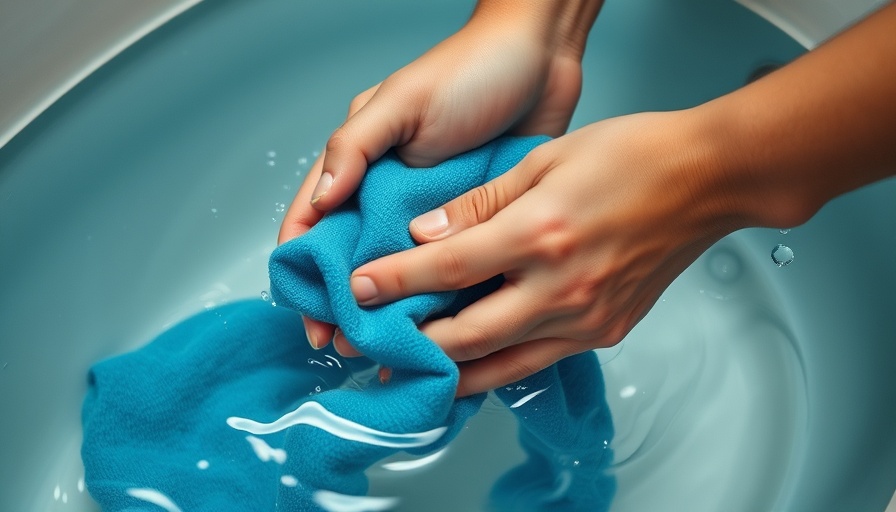
Why Hand-Washing Matters in Today's Laundry Practices
In an era dominated by fast fashion and high volume laundry cycles, hand-washing clothes signals a return to conscientious garment care. Many people may view hand-washing as a chore best left in the past, yet it offers distinct advantages, especially for delicate or specialty fabrics. The personal attention given to each garment not only extends its lifespan but also fosters a deeper understanding of textile care.
Key Steps for Hand-Washing Your Clothes
To efficiently clean your favorite items using this age-old technique, it’s essential to follow a systematic approach:
- Check the Care Label: Every garment comes with specific care instructions. Understanding these is vital to avoid irreversible damage, such as shrinking or discoloration.
- Pre-treat Stains: Address any stains before washing. Using a stain remover or liquid detergent and applying it gently can help eliminate blemishes without damaging the fabric.
- Fill the Sink: Depending on the fabric's requirements, use lukewarm or cold water for washing. Add the appropriate detergent and mix it well.
- Soak and Squeeze: Place your garment in the water, ensuring it is fully submerged, and gently swish it around to allow the detergent to penetrate the fabric.
- Rinse and Remove Excess Water: Rinse thoroughly, ensuring all detergent is washed away, and be gentle when removing excess water to avoid damage.
By sticking to these steps, you can maintain the integrity and color of your garments.
Understanding the Benefits of Hand-Washing
Hand-washing is not just a meticulous task; it is a skill that rewards cleanliness and care. This method is particularly crucial for items like lingerie and delicate sweaters, which may not withstand machine washing. Moreover, hand-washing reduces wear and tear, helping avoid the cyclical frustration of needing to replace clothing due to damage.
Environmental Considerations and Savings
Hand-washing can also have ecological benefits. Many washing machines consume significant amounts of water and energy, and by opting to wash smaller loads by hand, you contribute to conservation efforts. Additionally, taking good care of your garments means fewer purchases over time, creating savings that can be diverted to other pressing needs.
Myths Surrounding Hand-Washing
Despite its benefits, hand-washing is often misunderstood. Common misconceptions include ideas that it is time-consuming or inefficient. In reality, with practice, hand-washing can become a simple and quick routine, perfectly tailored to your daily schedule.
Final Thoughts on Hand-Washing
Embracing hand-washing can transform your approach to laundry, invoking a sense of pride in garment care and environmental responsibility. The skill can be beneficial to those wanting to maintain their clothing while providing gentle care where needed.
Incorporate these smart hand-washing tips into your laundry routine and experience the difference in garment longevity and fabric care.
By adopting these techniques, you can keep you well-loved garments in their top condition for years to come. Explore, practice, and enjoy these caring methods of fabric cleaning!
 Add Row
Add Row  Add
Add 




Write A Comment